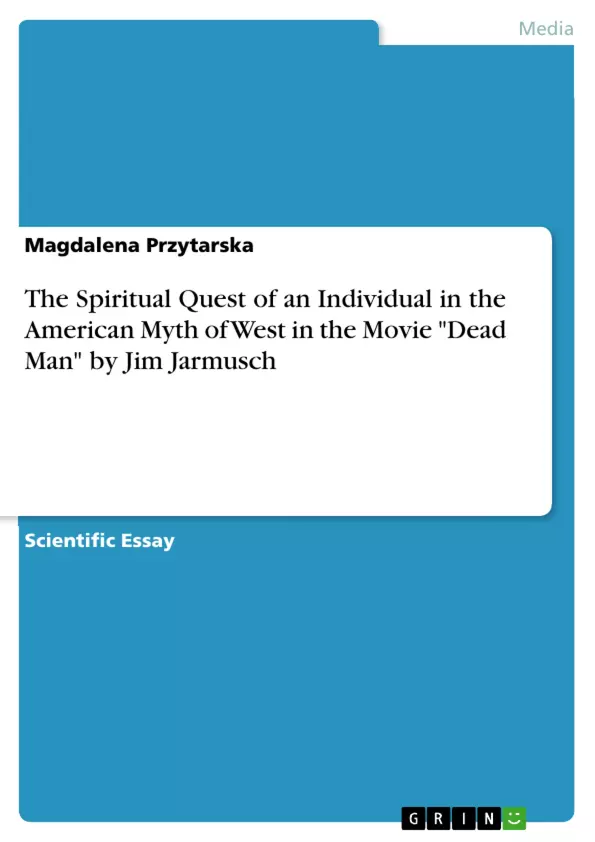A review of the movie "Dead Man" by Jim Jarmusch with focus on the condition of a man in the world, and discussing the outcomes of the myth of the American West.
Inhaltsverzeichnis (Table of Contents)
- The Spiritual Quest of an Individual in the American Myth of West in the Movie Dead Man by Jim Jarmusch
- Dead Man – A Tale of Finding Sense in Life
- William Blake: A Dead Man on a Spiritual Quest
- Contrasts in the American West
- The World of Nature and the Town of Machine
- The Whites and the Indians: Clash of Worlds
- William Blake’s Journey to the West – A Journey to Death
Zielsetzung und Themenschwerpunkte (Objectives and Key Themes)
The primary objective of this text is to analyze Jim Jarmusch's film "Dead Man" (1995) as a commentary on the American myth of the West and the individual's search for meaning and belonging. The text explores the spiritual journey of William Blake, a dying accountant from Cleveland who finds himself thrust into the harsh realities of the Western frontier.
- The spiritual quest of an individual in the American West
- The clash of cultures between Native Americans and white settlers
- The exploitation and mistreatment of Native Americans
- The contrasts between the natural world and the industrialized world of the white settlers
- The theme of death and the search for meaning in a world filled with violence and materialism
Zusammenfassung der Kapitel (Chapter Summaries)
- The text begins by introducing Jim Jarmusch's film "Dead Man" as a revisionist Western that challenges conventional narratives. The film, set in the American West during the 19th century, explores the theme of a spiritual quest for meaning and belonging.
- The main character, William Blake, is presented as a "dead man" from the beginning of the film. He is a lost and disillusioned soul who seeks a place in the world. His journey westward is marked by violence and encounters with both friendly and hostile characters.
- The film contrasts the American West as a place of natural beauty and spiritual connection with the brutal and exploitative world of white settlers. The town of Machine is depicted as a symbol of industrialization and the destructive forces of progress. The contrast between this town and the wild, natural world is significant in shaping Blake's journey.
- The relationship between Blake and the Native American character Nobody is central to the film. Nobody represents a different way of life, one grounded in spirituality, respect for nature, and a profound understanding of the interconnectedness of all things. Blake's journey with Nobody is a process of transformation, as he learns from the Indian's wisdom.
- The text argues that Blake's journey to the West is ultimately a journey to death. His physical death at the end of the film symbolizes the end of his search for belonging in a world that offers him no place. However, his death also represents a spiritual awakening, as he embraces the Native American way of life and finds peace in the natural world.
Schlüsselwörter (Keywords)
The key themes and concepts explored in this text include: American West, spiritual quest, Native Americans, exploitation, colonialism, death, belonging, nature, industrialization, violence, materialism, spirituality, and the search for meaning.
- Citar trabajo
- Magdalena Przytarska (Autor), 2011, The Spiritual Quest of an Individual in the American Myth of West in the Movie "Dead Man" by Jim Jarmusch, Múnich, GRIN Verlag, https://www.grin.com/document/177213



